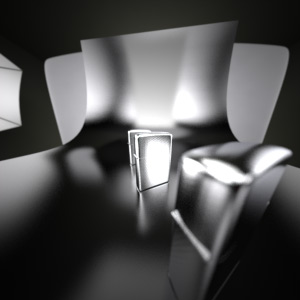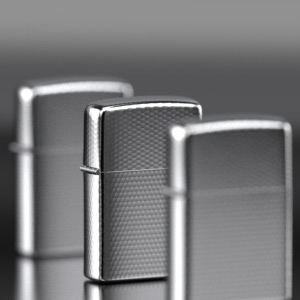The Maxwell Render camera is designed to work like a real camera so it is important to understand some photographic concepts. The most important concept to understand is the Depth of Field (the depth of the area in the render that will be in focus) and the settings that affect it. In a real camera, the depth of field is determined by the focal length and aperture of the lens, the size of the film or digital sensor and the distance of the camera to the object.
...
| Section | |||||||||||
|---|---|---|---|---|---|---|---|---|---|---|---|
|
...
Comparing two extremes, a very wide angle lens (15mm) and a "telephoto" lens (500mm):
| Section | |||||||||
|---|---|---|---|---|---|---|---|---|---|
|
In the above examples, the camera with the wide angle lens setting was moved very close to the first Zippo and you can see that it still captures all the Zippos because of the extremely wide FOV. Notice also the perspective distortion that happens with such a wide angle lens - the objects seem more "stretched" and distorted, as when looking through a peephole. Also the distance between each Zippo becomes exaggerated. In contrast, the telephoto lens squashes, or flattens the perpective, it becomes difficult to tell exactly how far apart each Zippo is.
The camera also had to be moved far back to capture all the Zippos. Notice also that with the wide angle lens it is only the Zippo very close to the camera which is out of focus. Any objects not close to the lens will be in perfect focus, no matter the F-stop setting. With the telephoto lens, the DOF is still narrow, even narrower than the render with the same F-stop but with a 50mm lens.



